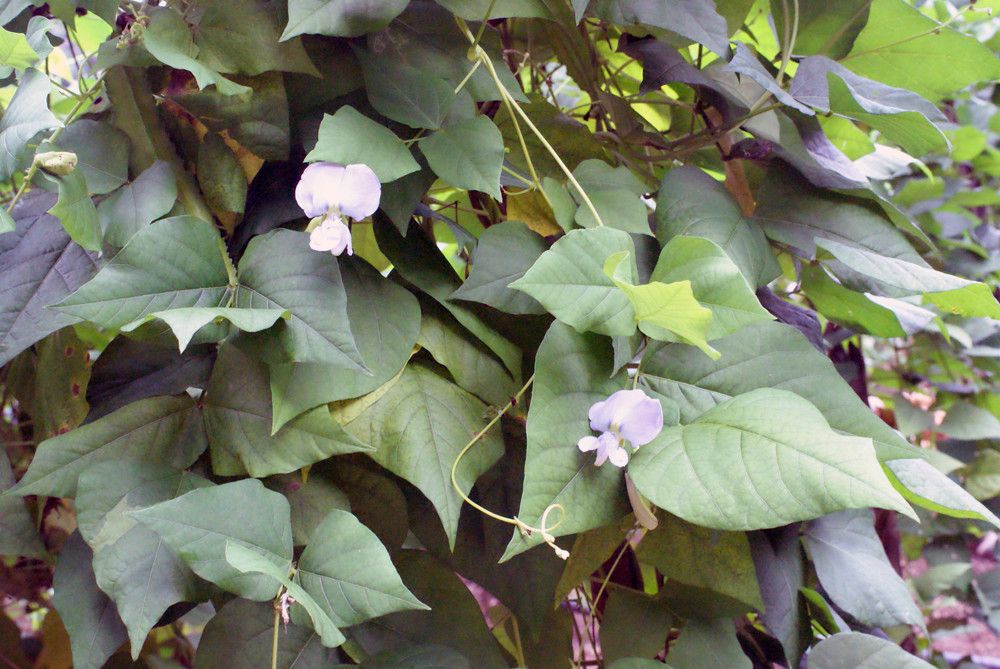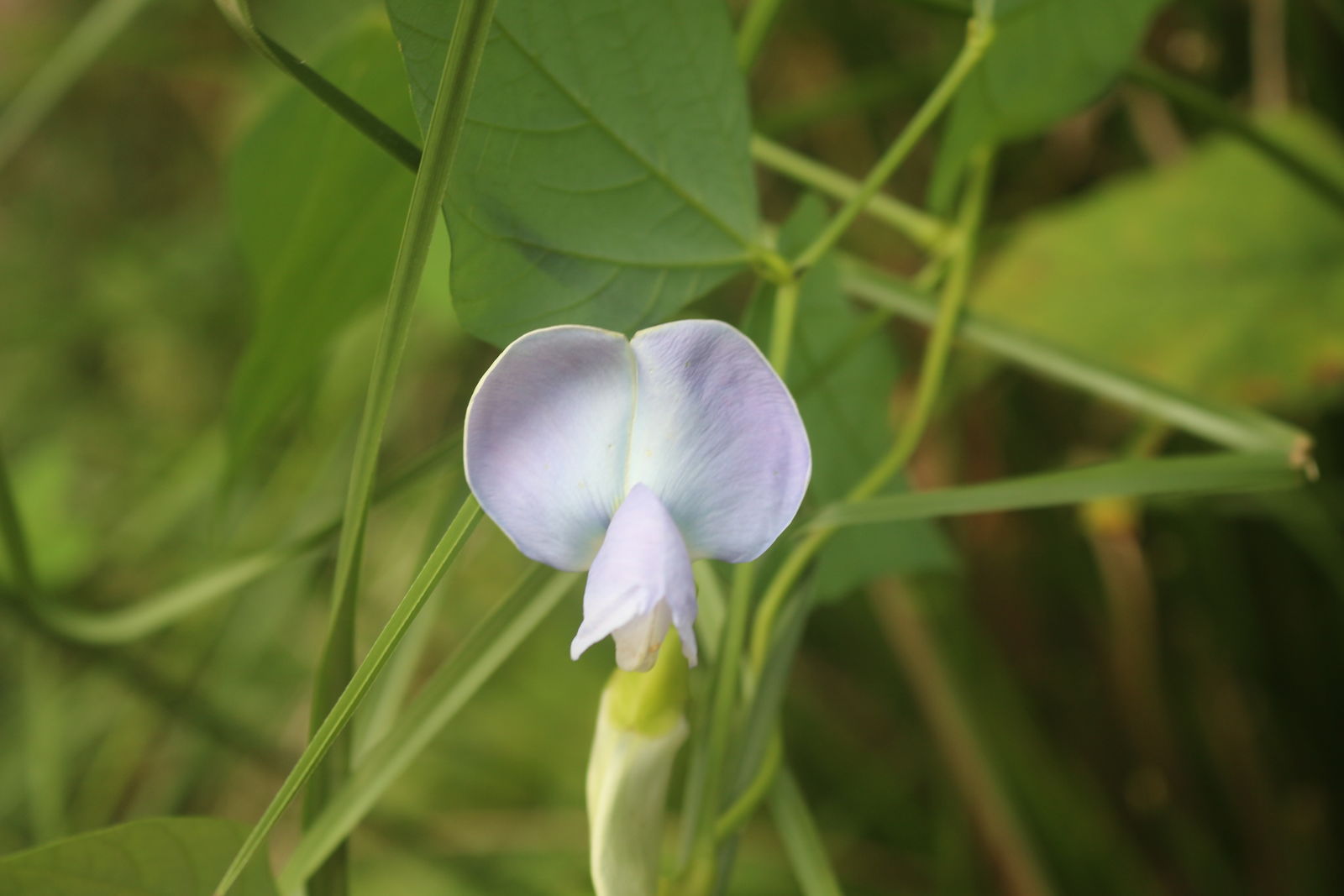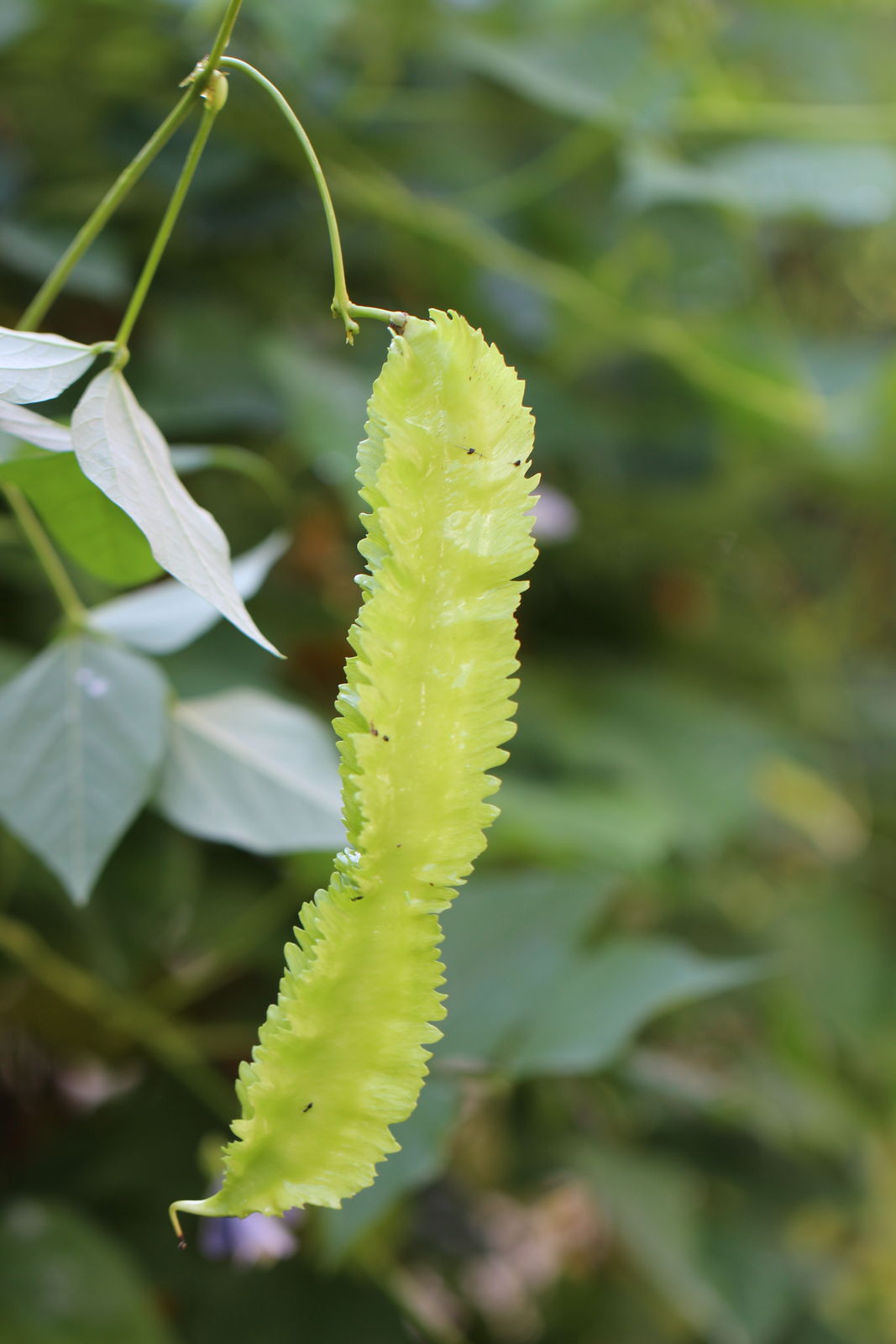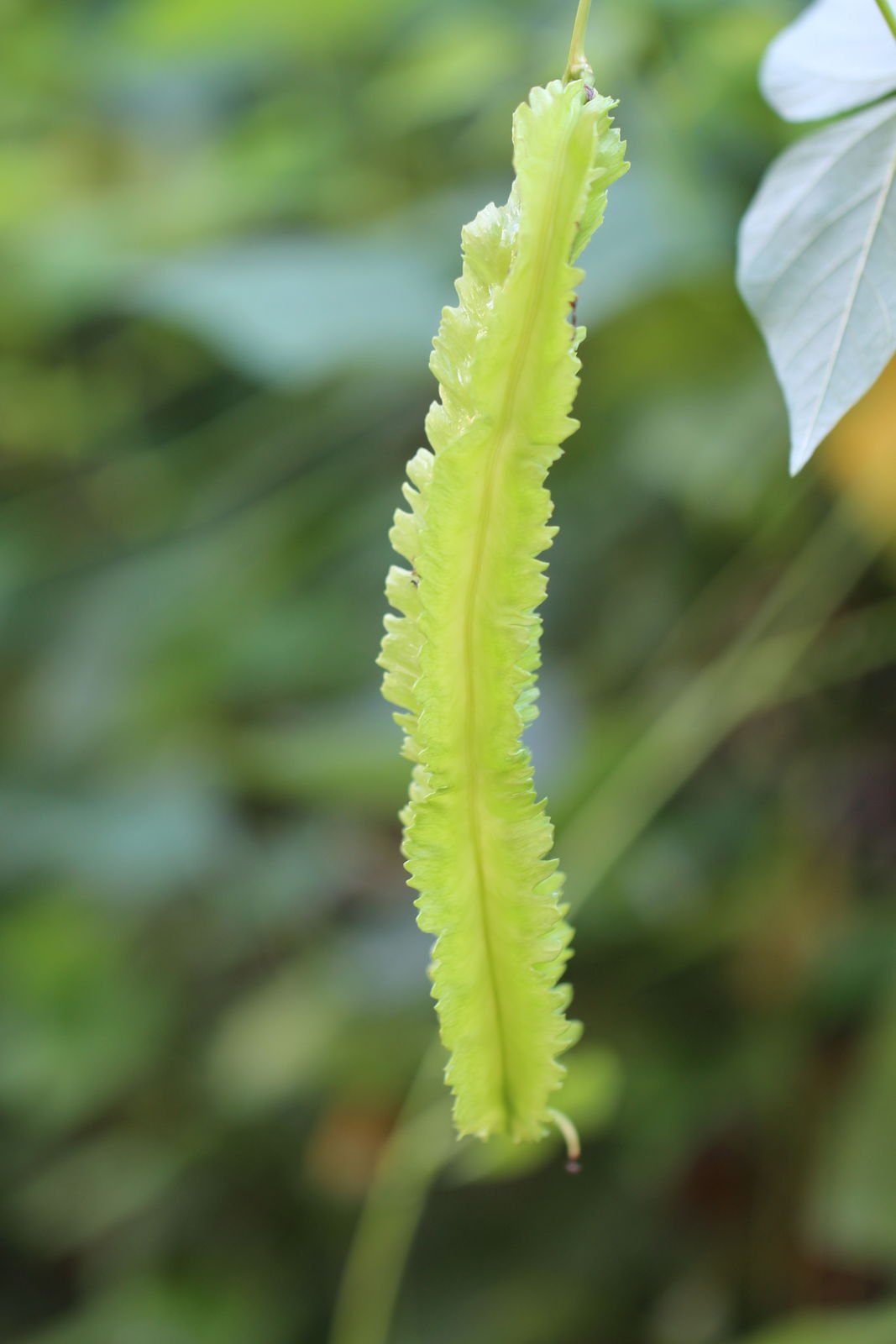Winged Bean
psophocarpus tetragonolobus
Also known as: ["Asparagus Pea","Goa Bean","Four-angled Bean","Manioca Bean"]
Overview
A tropical legume known for its edible pods, leaves, and tubers, valued for its high nutritional content.
Benefits & Perks
["edible fruits","medicinal use","culinary herb","aesthetic foliage","wildlife attractant (bees, butterflies, birds)","drought tolerant"]
Botanical Classification
| Phylum: | Magnoliophyta |
| Class: | Magnoliopsida |
| Order: | Fabales |
| Family: | Fabaceae |
| Genus: | Psophocarpus |
| Botanical Name: | Psophocarpus tetragonolobus |
Plant Characteristics
Basic Information
- Category: Vegetables
- Suitable Location: outdoor garden bed in warm climates, or large container in cooler regions
- Suitable For:
- Is Weed: No
- Allergenicity: low
Environmental Needs
- Climate: {"temperatureRange":"15–35°C"}
- Hardiness: {"zones":"9–11"}
- Misting: rarely required unless in very dry indoor conditions
- Drainage: Fast-draining to prevent waterlogging.
- Soil Type: Well-draining, loamy soil with organic matter.
Maintenance Level
- Maintenance Level: moderate
- Toughness Level: moderate
- Pruning Frequency: As needed, but generally every 6–12 months.
- Pruning Intensity: Light to moderate; avoid heavy pruning unless necessary.
Care Details
Ideal Sunlight Coverage:
Full sun (6–8 hours/day); tolerates partial shade but may reduce yield.
Sunlight Tolerance Tips:
Acclimate gradually if moving from shade to sun; protect from intense midday sun in hot climates; ensure good air circulation to prevent fungal issues.
Care Requirements
Care Difficulty
moderateModerate
Sunlight
full sun to partial shade
Rotate plant for even growth; use shade cloth in extreme heat; avoid direct sun on leaves during peak hours.
Watering
every 3–5 days during active growth, reduce in winter
Water thoroughly but allow soil to dry between waterings; avoid overhead watering to prevent fungal issues.
Soil
well-draining, loamy soil with moderate organic matter
pH: Slightly acidic to neutral (pH 6.0–7.0).
Avoid heavy clay soils; ensure good aeration; test pH if issues arise.
Temperature
Warm temperatures (20–30°C); sensitive to frost; thrives in tropical to subtropical climates.
Avoid sudden temperature shifts; protect from frost; maintain consistent warmth during growing season.
Fertilizing
every 4–6 weeks during growing season with balanced liquid fertilizer
Apply fertilizer after watering to prevent root burn; avoid over-fertilizing to prevent salt buildup.
Propagation
Methods
Seeds or stem cuttings.
Step-by-Step Propagation Guide
- Prepare medium.
- Plant seeds or cuttings.
- Maintain moisture.
- Provide warmth.
- Monitor for roots.
Best Time: Spring or early summer for optimal root development.
Environment
Warm (20–25°C), humid, and bright but indirect light.
Medium
Well-draining potting mix (e.g., peat moss, perlite, and sand).
Hormone
Optional, but rooting hormone can speed up root development.
Timeline
Seeds: 1–2 weeks to germinate; cuttings: 2–4 weeks to root.
Tools Needed
Pruning shears, rooting hormone, pots, well-draining soil mix.
Quick Tips
Use fresh seeds for better germination; keep cuttings humid until roots form; avoid overwatering.
Pruning & Repotting
Pruning Guide
Method
Pinch back tips for bushier growth; trim leggy stems; remove yellow or dead leaves.
Pruning Plan
Remove dead or diseased growth; shape plant for better air circulation; encourage bushier growth.
Tools
Pruning shears, gloves, disinfectant.
Checklist
Disinfect tools; prune dead/diseased parts; shape plant; clean up debris.
Repotting Guide
Best Season
Spring, before active growth begins.
Pot Size
One size larger pot (e.g., +2–3 cm in diameter).
Method
Remove plant gently; trim roots if needed; place in new pot with fresh soil; water lightly.
Suggestions
Repot every 2–3 years or when roots fill the pot; beneficial for container-grown plants.
Checklist
Choose appropriate pot; prepare new soil; handle roots carefully; water after repotting.
Advanced Care Tips
Watering Mastery
Watering Checklist
Check soil moisture; water deeply; ensure drainage; adjust for season.
How to Apply Water Properly
Water at the base of the plant, ensuring moisture reaches the root zone; water early in the day to minimize evaporation and fungal growth.
Watering Schedule Tips
Water deeply once the top inch of soil feels dry; reduce frequency in winter to prevent root rot.
Soil Improvement
Add compost or well-rotted manure; mix in perlite or sand for drainage; ensure organic matter is well-decomposed.
Temperature Stress Management
Signs of Temperature Issues
Wilting, yellowing leaves, stunted growth, or flower/fruit drop.
Cold Stress
Growth cessation, leaf damage, potential death in prolonged cold.
Solution: Provide frost protection (e.g., row covers); move potted plants indoors; avoid planting in frost-prone areas.
Hot Stress
Leaf scorch, reduced flowering, wilting despite adequate water.
Solution: Provide afternoon shade; increase watering; use mulch to retain soil moisture.
Fertilizing Guide
Fertilizing Checklist
Check fertilizer type; dilute as per instructions; apply during active growth; flush soil occasionally.
Fertilizing Method
Balanced liquid fertilizer (10-10-10) every 4–6 weeks during growing season; reduce or stop in winter.
Common Problems & Solutions
Toxicity Warning
Cats
Non-toxicThe seeds of Psophocarpus tetragonolobus are generally non-toxic to cats when consumed in moderation. However, raw seeds may contain compounds that can cause mild digestive upset if ingested in large amounts.
⚠️ Symptoms:
🌿 Toxic Parts:
⚡ Toxic If:
if eaten in moderation
Dogs
Non-toxicThe seeds of Psophocarpus tetragonolobus are generally non-toxic to dogs when consumed in moderation. However, raw seeds may contain compounds that can cause mild digestive upset if ingested in large amounts.
⚠️ Symptoms:
🌿 Toxic Parts:
⚡ Toxic If:
if eaten in moderation
Humans
Non-toxicThe seeds of Psophocarpus tetragonolobus, commonly known as winged bean, are generally non-toxic when consumed in moderation. However, raw seeds may contain trypsin inhibitors and lectins, which can interfere with protein digestion if consumed in large quantities.
⚠️ Symptoms:
🌿 Toxic Parts:
⚡ Toxic If:
if eaten in moderation
Frequently Asked Questions
Q: Is the winged bean suitable for container gardening?
A: Yes, it can be grown in large containers with support for climbing.
Q: How long does it take for winged beans to mature?
A: Typically, it takes 60–90 days from planting to harvest.
Q: Can the leaves of the winged bean be eaten?
A: Yes, the leaves are edible and can be cooked like spinach.
Quick Reference
| Family: | Fabaceae |
| Care: | moderate |
| Light: | full sun to partial shade |
| Water: | every 3–5 days during active |
Get Expert Care Tips
Download the Plantious app for personalized care reminders and plant identification!
Google Play App Store








